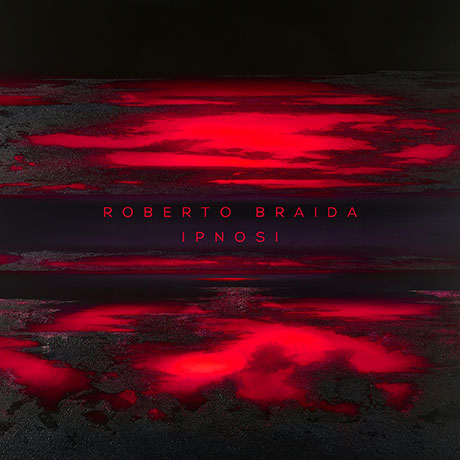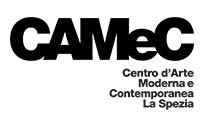
ROBERTO BRAIDA
La Spezia – Modernity, in art, began when we became aware that the visible is only a small part of the real and that all the real − above all what is unknown, unnamed, unattended − is representable, and it is representable outside the visible forms.
It looks like a tongue twister, and yet it is the heart of modernity: art witnesses what the eye does not see, and yet is present. It is in this surplus of vision, power, attraction, involvement of our mind with respect to the biological, cellular limits of the eye, that all the impetus of modernity actually lie.
Roberto Braida is a modern artist because, while painting with the detail-oriented, meticulous erudition of a fourteenth-century painter, he does not represent what the eye sees, but rather what our intellect observes and investigates.
His works, especially those of recent years, are far from what they appear: they are not landscape views, physical lines of water, marine views, and oceanic distances. They resemble the embers of the sunsets, the dawns of the morning, the vastness of the abysses, the nocturnes that follow the dying of the twilights. They look like this, and yet they are different. There is no nature or landscape mimicry in his works. «I care about the resemblance, but it has to be a deeper one, more real than the real», said Pablo Picasso. That is, Braida acts pictorially bearing witness to this understanding: he aims at a resemblance more real than the real. In front of a painting by Braida, our eyes see one thing − a physical one, like a sea line on the horizon −, and we might say that Braida has painted the horizon. However, our mind, looking more carefully, immediately corrects what the eyes see, because a sea horizon can never separate heavens and seas, which are so chromatically complex. Heavens and seas, which give space for smears of colors, nuances, constellations of expertly-dosed tones and colors, of which no sea view, no starry sky may have been direct inspirer. Braida does not imitate nature: he overcomes it, giving us the illusion of imitating it. Such an incredibly solitary path of the history of art − out of the different steps which canonically mark the evolution of artistic expression over the last centuries, made of artists and works giving the impression of representing nature, has yet to be investigated in depth. Actually, this apparent verisimilitude is just a window to access a deeper and more stratified interpretation. Well, Braida is one of the last witnesses of such a solitary path in art, and yet it began a few millennia ago and has come up further and further along the ridge of the centuries, of which here we give a summary, and yet not completely detailed, mapping. Let us think about the frescoes of the Tomb of the Diver, dating back to the 5th century BC., stored in the Archaeological Museum of Paestum. This is an unequaled masterpiece of classicism in which, apparently, we see a diver jumping off a dive to a horizontal line that looks like the water of a pool or the sea. However, in a tomb, that man, who jumps to nowhere off a just-hinted dive is anything but the image of a swimmer who wants to take a bath; thus, that dive immediately acquires a symbolic, psychological value, much more complex than a simple swim. The man jumps, autonomously or not, to infinity, at the time of his birth and death. Does The Sea of Ice, known as The Wreck of the Hope by Caspar David Friedrich (1822-24), stored in the Kunsthalle in Hamburg, really represent what our eyes see, namely the sinking of the ship during a polar expedition, crashed on large, sharp, cutting patches of ice? Or, rather, does the work masterly call us to go beyond what we immediately perceive, to discover a deeper, more interior sense of it, i.e. the hope that crashes, and sometimes falls down, before the insurmountable adversities of life? The clouds and bays by John Constable are clouds, bays, as the storms and sea views by the Macchiaiolis are storms, and sea views, albeit magnificent. Instead, the clouds and the storms by Joseph William Turner (Steam-Boat off a Harbour’s Mouth, 1842, Tate Gallery in London) are inner clouds and storms, inner abysses, even if they have the features of downpours, clouds, atmospheric disturbances. Arnold Böcklin’s The Isle of the Dead (1886, Museum der Bildenden Künste in Leipzig) are not physical islands, they are isolations, prisons, dramatic suspensions of the soul.
The nature of Odilon Redon is not made of flowers and shrubs: it is made of dreams, dreamy purities, caresses (Night, Day, 1910-1911, Library of the Abbey of Fontfroide). The squares of Giorgio De Chirico, deliberately, are not representations of physical squares, even if they look like this. The perspective is not linear, the buildings are crooked, slightly oblique, falsified, with floor displacements, just to generate that effect of estrangement that does not make us perceive those places as realistic spaces, but rather as mental spaces, suspended in a constant enigma. It is in this peculiar, and not yet thoroughly detailed path of artistic expression, from classicism to modernity, which the art of Roberto Braida fits into the present day, with the due proportions of history. Such path is common to many other well-established artists, and to some contemporary ones, who contend with Braida for the judgment and the scrutiny of history. All of them − some with gigantism, and others in a lesser way − bear witness to a phrase that the poet Eugenio Montale marbled in one of his well-known poems: « All the images keep saying: Higher, higher! ». You have to interpret the style of Braida under this specific “worry” that certain, individual artists have had throughout the history of art, i.e. overcoming the reality giving the impression of emulating it, overcoming the “dictatorship” of one’s own eyes. Otherwise, you will erroneously end up labelling the activity of this artist as a skillful landscape painting, as a sort of crepuscular surrealism. Nothing could be more wrong. Braida will be evaluated by history not as a mannerist of landscape and views. Rather, he will be evaluated as a silent and solitary tracker of the depths of the soul. To us observers, from his land between Liguria and northern Tuscany, he leaves the task of not stopping to what our eyes see, but rather of activating the acumen of a more mature thought, because every one of his works − from the smallest one, to the most prodigious one – keeps saying: «Higher!». (Luca Nannipieri)
Exhibition promoted by:
Municipality of La Spezia
The Mayor, Pierluigi Peracchini
and produced by:
CAMeC Centro Arte Moderna e Contemporanea
Director of Museums and Cultural Services, Marzia Ratti
in collaborazione con: CASA D’ARTE SAN LORENZO 1995, ARCHIVIO C.R.A. -CENTRO RACCOLTA ARTE
con il patrocinio di: Provincia della Spezia
e con il contributo di: COOP Liguria, ENEL
Mostra e testo critico in catalogo: Luca Nannipieri
Testi istituzionali in catalogo di: Pierluigi Peracchini e Marzia Ratti
Coordinamento tecnico-scientifico: Eleonora Acerbi, Cinzia Compalati, Cristiana Maucci
Progettazione grafica: Riccardo Vannetti
Catalogo: Editoriale Giorgio Mondadori
COMUNICAZIONE
Ufficio stampa Comune La Spezia: Luca Della Torre | Tel. +39 0187 727324 | ufficiostampa@comune.sp.it
CSArt – Comunicazione per l’Arte: Chiara Serri | Tel. +39 0522 1715142 | Cell. +39 348 7025100
info@csart.it| www.csart.it
